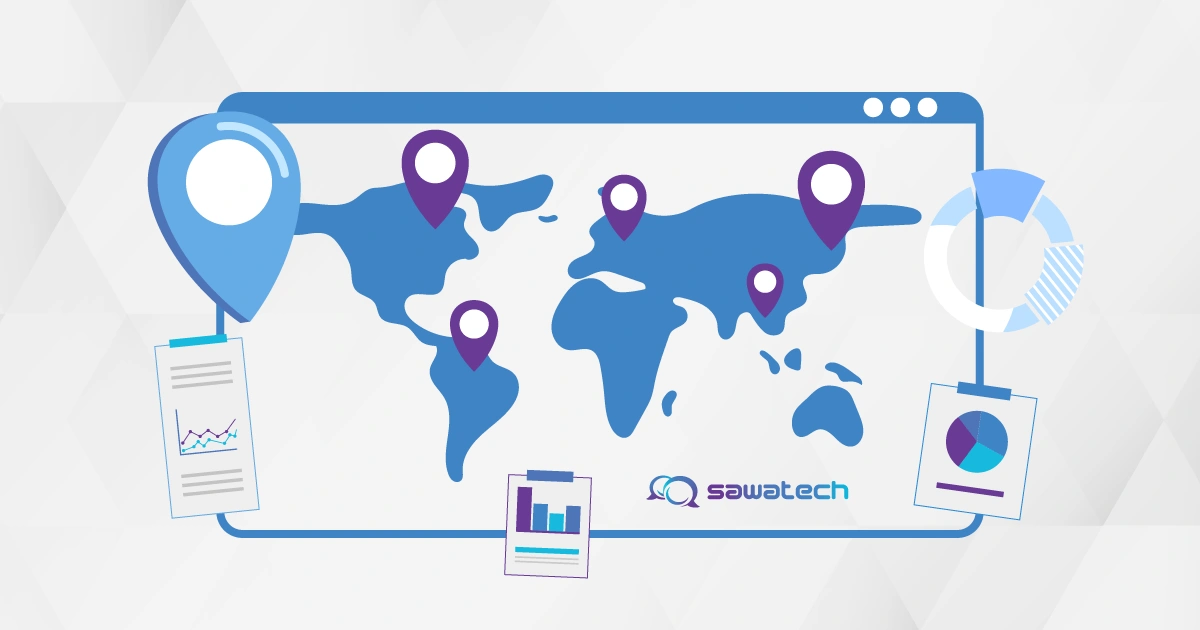As companies expand into new markets, one question arises: how do you measure the real impact of your localization strategy?
The answer lies in localization metrics — measurable indicators that track the quality, efficiency, and business value of your localization efforts. These KPIs go beyond basic translation stats. They reveal how well your message resonates with global users, how effectively your workflows run, and where optimization is needed.
In this guide, we’ll explore the most important localization KPIs, how to track them, and why they’re essential for international growth.
Why Localization Metrics Are Key to Global Success
Localization is no longer just a “nice-to-have” — it’s a strategic pillar for global expansion. Companies localize to build trust, drive engagement, and improve conversion rates across regions. But without measurement, how do you prove it’s working?
That’s where localization metrics become essential. They provide visibility into the entire localization lifecycle—from linguistic accuracy and cultural relevance to turnaround time and regional performance.
Businesses that track these KPIs can:
- Ensure high-quality translations across languages.
- Identify bottlenecks in the localization workflow.
- Justify the ROI of localization to stakeholders.
- Improve customer experience across global markets.
“Localization metrics provide the insight needed to move from reactive fixes to proactive growth strategies.”
| Reason | How Metrics Help | Business Impact |
|---|---|---|
| Prove ROI and Strategic Value | Quantify revenue, cost savings, and customer satisfaction from localization efforts | Justifies investment and secures stakeholder buy-in |
| Drive Continuous Improvement | Identify bottlenecks, track errors, and monitor turnaround times | Streamlines processes and boosts efficiency |
| Enhance Customer Experience | Measure engagement, conversion rates, and feedback in local markets | Builds trust, loyalty, and brand affinity |
| Support Data-Driven Decision-Making | Analyze market performance and prioritize localization based on impact | Allocates resources for maximum returns |
| Enable Scalability and Consistency | Centralize data for quality, speed, and brand consistency across regions | Ensures efficient global expansion |
Understanding Localization Metrics and KPIs

What Are Localization Metrics?
Localization metrics are quantifiable measures used to assess the performance of localization processes. Unlike generic business KPIs, these are focused on how well content is translated, adapted, and delivered across cultures and regions.
They track:
- Linguistic quality (e.g. accuracy, terminology consistency)
- Operational efficiency (e.g. cost, turnaround time)
- Market performance (e.g. engagement, conversions by locale)
These metrics help answer key questions like:
- Are our translations culturally appropriate and technically accurate?
- Are localized campaigns performing better than originals?
- Is localization improving the overall user experience?
Table of Key Localization KPIs
| KPI Category | Example Metrics | Purpose |
|---|---|---|
| Time & Delivery | Turnaround time, on-time deliveries | Speed and reliability |
| Quality | Error rates, pass/fail rates, quality scores | Translation and content quality |
| Cost | Cost per word, budget adherence | Financial efficiency |
| Productivity | Throughput rate, % complete | Team and process efficiency |
| Customer Impact | Satisfaction, NPS, support call deflection | User experience and satisfaction |
| Market & Revenue | Conversion rate, net revenue, new customers | Business growth and ROI |
| Engagement | Website traffic, social media engagement | Brand awareness and reach |
| Completeness/Consistency | Content audits, terminology checks | Content integrity and user experience |
Examples of Core Localization KPIs
- Linguistic Quality Score (based on LQA standards)
- Error rate per 1,000 words
- First-pass yield (how often content passes QA on the first try)
- Turnaround Time (TAT) by language pair
- Consistency Rate using CAT tools
- Time-to-Market for localized versions
- Customer satisfaction by language
Enhance translation consistency and reduce errors with our Back Translation Services.
Steps to Measure Localization Metrics Effectively
1. Define Your Goals and Select the Right KPIs
Start by aligning your localization KPIs with business outcomes. For example:
- If your goal is faster market entry, focus on turnaround time, automation rate, and time-to-market.
- If the focus is user retention, track localized user experience metrics such as CSAT and engagement duration.
You may also set regional goals, like higher conversions in LATAM markets, requiring metrics specific to Spanish or Portuguese content.
2. Use the Right Tools to Track Performance
There are several tools for tracking localization metrics, including:
- Translation Management Systems (TMS) like Smartling, Lokalise, or Phrase.
- Quality Assurance (QA) Software such as ContentQuo or Xbench.
- Analytics platforms that track page behavior for localized content.
Advanced platforms use AI to flag inconsistencies, recommend glossary updates, and predict potential errors.
Want to align tools with your business goals? Explore our Localization Strategy for actionable insights.
3. Analyze the Results and Optimize Workflows
Collecting data is just the first step. Use it to uncover:
- Workflow inefficiencies (e.g. delays during review)
- Vendor performance issues
- Underperforming content in specific languages
From here, make changes such as:
- Implementing automated reporting
- Standardizing LQA procedures
- Refining localization memory and glossaries
- Prioritizing high-value content for top markets
Best Practices for Analyzing Localization Metrics
1. Standardize Quality Metrics
To ensure consistency across regions and vendors, standardize your linguistic quality assurance (LQA) process.
Key components include:
- Error categorization: grammar, terminology, formatting
- Weighted scoring based on error severity
- Reviewer guidelines for unbiased evaluations
- Quality benchmarks for vendors and internal teams
2. Measure Cultural Adaptation
Translating words isn’t enough—you must translate meaning, tone, and context.
Track metrics like:
- User engagement across culturally adapted content
- A/B testing results for visual and copy localization
- Drop-off rates for region-specific content
This ensures your message truly resonates, instead of just reaching.
3. Monitor Localization’s Impact on UX
Localization has a direct impact on user satisfaction. Important UX metrics include:
- Page dwell time on localized versions
- Time-to-task completion in different language interfaces
- Net Promoter Score (NPS) by locale
- Support ticket volume from non-English users
These insights allow you to refine both content and design for each market.
Industry-Specific Localization Metrics
Gaming Industry
- Dialogue accuracy score across in-game scripts
- Retention rate by language
- Localized bug frequency after updates
E-Commerce Platforms
- Cart abandonment rate in localized checkouts
- Conversion rates by country
- Search term accuracy in local language
SaaS & Software Companies
- Feature adoption rate in localized interfaces
- Bug reports related to UI/UX translations
- In-app engagement post-localization
Enhance your international reach with expert Multilingual SEO that drives visibility for localized content.
Tools and Technology for Tracking Metrics

1. TMS with Built-in Analytics
Platforms like Memsource, Smartcat, and Lokalise offer:
- Visual dashboards
- Custom KPIs tracking
- Integration with QA tools
2. AI for Localization Performance
AI helps automate repetitive tasks and refine quality by:
- Suggesting better terminology based on past data
- Identifying trends in recurring errors
- Forecasting delivery delays
3. Automation in Reporting
Automated tools help generate real-time:
- Error rate reports
- Turnaround time summaries
- Vendor-specific performance dashboards
This helps stakeholders make fast, data-backed decisions.
Frequently Asked Questions About Localization Metrics
How do localization metrics help a business grow internationally?
They provide data on what’s working and what isn’t—empowering teams to refine content, improve UX, and boost regional revenue.
What can be done to improve translation quality scores?
Standardize LQA reviews, invest in glossaries, and use back translation for critical content.
How can a company reduce localization turnaround time without sacrificing quality?
Adopt a centralized TMS, automate QA checks, and reduce handoffs between teams.
What contributes to a high localization error rate, and how can it be minimized?
Common issues include vague instructions, inconsistent terminology, and poor quality control. Use QA tools and clear briefs to reduce errors.
How do I determine the ROI of my localization efforts?
Compare localization costs with metrics like revenue from localized markets, increased conversion rates, and higher engagement per region.
Track and Optimize Your Localization Metrics with Us
Ready to measure and maximize your global success?
At Sawa-Tech, we help businesses build smarter localization strategies—driven by data and powered by precision.
Let’s take the guesswork out of your global growth.




